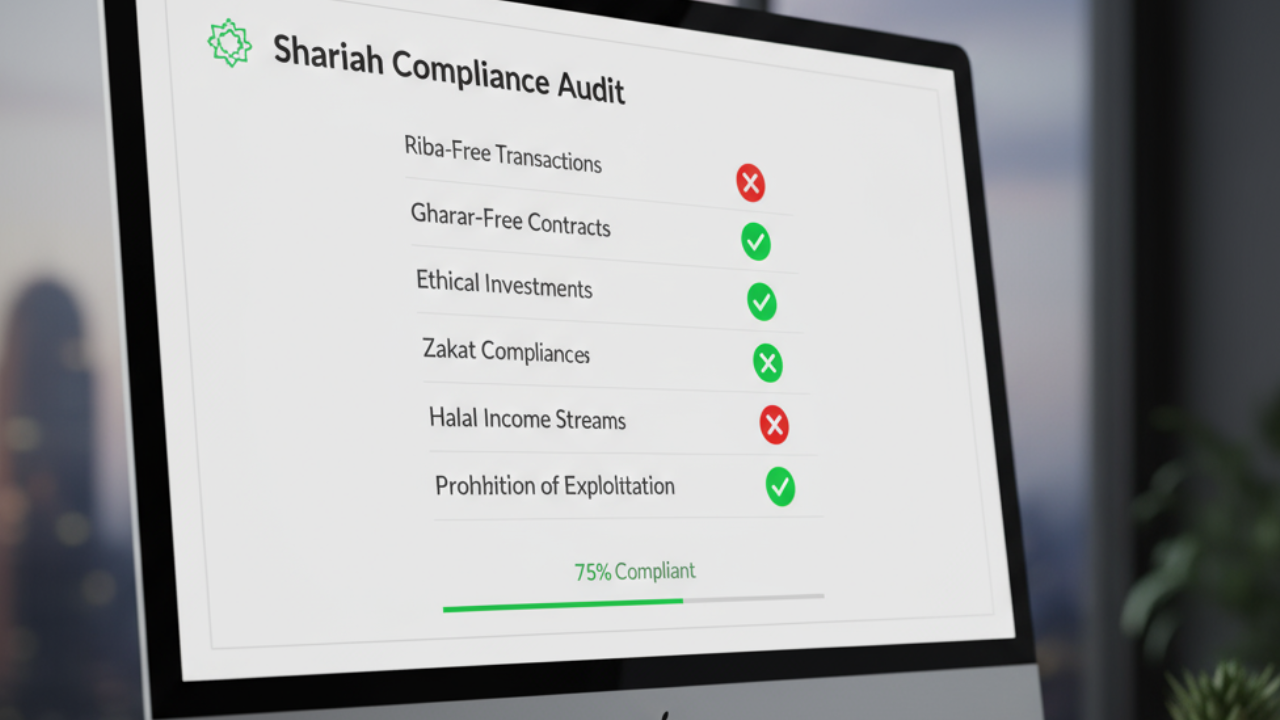Introduction: From Confusion to Clarity in Halal Investing
When I first transitioned from leveraged trading to halal investing, one question kept coming up:
“How do I actually know if a stock or ETF is Shariah-compliant?”
For a long time, I relied on vague “Islamic” labels or word-of-mouth. But I wanted certainty — backed by data, not assumptions.
That’s when I began using AI tools like NotebookLM, Perplexity, and ChatGPT to create a structured, repeatable way to check compliance myself.
Today, I’ll show you exactly how I screen stocks and ETFs using modern AI — so you can apply the same system to your own portfolio.
Step 1: Understanding the Shariah Screening Framework
Before you even open an AI tool, you need to know what to look for.
Every recognized Shariah board (AAOIFI, Dow Jones Islamic, MSCI, FTSE) uses two levels of screening:
1. Business Activity (Sector Screening)
Exclude companies involved in:
- Alcohol, pork, gambling, tobacco, and adult entertainment
- Conventional banking and insurance
- Weapons manufacturing
- Media or entertainment that promotes haram activities
PASS: No significant haram activity
FAIL: ≥5% of revenue from prohibited activities
2. Financial Ratio Screening
Even “clean” companies can fail if their financial structure involves riba (interest).
Common thresholds are:
- Debt / Total Assets < 33%
- Cash + Interest-bearing securities / Total Assets < 33%
- Accounts Receivable / Total Assets < 33%
If a company crosses any of these, it fails compliance.
Step 2: Using AI to Gather Data
Once I know the rules, I use AI to find and analyze the numbers fast.
Perplexity – My Live Data Engine
Perplexity is amazing for pulling real-time financial data.
I simply type a structured query like:
“Give me Tesla’s latest balance sheet ratios: debt/total assets, cash + interest-bearing securities/total assets, and accounts receivable/total assets. Also show revenue breakdown by segment.”
Perplexity instantly compiles this from sources like Yahoo Finance or Morningstar.
I can also use it for ETFs:
“List the top 10 holdings of ISDW (iShares MSCI World Islamic ETF) and show their sector exposure.”
I copy these results into my compliance notebook (NotebookLM).
Step 3: Applying My Shariah Checklist in NotebookLM
NotebookLM (Google’s AI notebook) is my Shariah compliance engine.
I uploaded my custom Shariah compliance checklist and now apply it to each company or ETF.
The checklist looks like this:
- Business Activity – Pass/Fail
- Revenue Purity – <5% non-halal
- Financial Ratios – <33% thresholds
- ETF Holdings – Top 10 holdings screened
- Dividend Purification – Track % to donate if any
- Final Verdict – Shariah Compliant / Not Compliant
So when I paste financial data from Perplexity into NotebookLM, I simply ask:
“Apply the Shariah compliance checklist to Tesla based on the uploaded data.”
NotebookLM gives me a clean PASS/FAIL summary with explanations — and it stores the results so I can build a personal database of screened stocks and ETFs.
Step 4: Screening ETFs Automatically
For ETFs, AI saves hours of manual work.
Example prompt:
“Check if the iShares MSCI World Islamic ETF (ISDW) or SPUS is certified as Shariah-compliant and which Shariah index it tracks.”
AI then confirms that:
- ISDW → MSCI World Islamic Index
- SPUS → S&P 500 Shariah Index
- HLAL → FTSE USA Shariah Index
- STXSHR → FTSE/JSE Shariah Top 40 Index
This verification ensures I’m investing in funds that are screened and monitored by recognized Shariah boards.
Step 5: Organizing and Tracking Results
I maintain a Halal Portfolio Tracker (in Notion or Excel) where I log:
- Ticker
- Country / Exchange
- Shariah compliance result
- Last screening date
- Notes (Zoya, AI confirmation, etc.)
I recheck every 3–6 months since compliance can change.
Step 6: My Hybrid AI Workflow (Perplexity + NotebookLM + ChatGPT)
Here’s my full setup, summarized:
| Tool | Purpose | Function |
|---|---|---|
| Perplexity | Live Data Fetcher | Pulls up-to-date ratios, revenue breakdowns, ETF holdings |
| NotebookLM | Compliance Engine | Applies Shariah checklist, explains pass/fail, saves notes |
| ChatGPT | Research Partner | Helps create rules, automate prompts, and analyze reports |
| Zoya / Islamicly | Reference Screeners | Used to cross-check results for extra certainty |
This workflow lets me screen any stock or ETF in under 10 minutes, with transparency and accuracy.
Step 7: Shariah Compliance Isn’t Binary — It’s a Process
AI gives you clarity, but the intention still matters.
Sometimes data isn’t perfect — that’s where your judgment, taqwa, and continued learning come in.
That’s why I’m also pursuing my Master’s in Islamic Finance, to bridge traditional Islamic knowledge with modern finance and technology.
My goal — and hopefully yours too — is to create Pure Trading:
A movement where Muslims can invest confidently, ethically, and intelligently.
Conclusion
AI won’t make you a scholar, but it can make you a better, more responsible investor.
The key is balance: use technology to assist your niyyah (intention) — not replace it.
“Whoever fears Allah – He will make for him a way out.”
(Qur’an 65:2–3)
If you’d like to start building your own halal portfolio, download my free guide:
5 Halal ETFs Every Muslim Should Know
It includes step-by-step instructions and links to verified halal ETFs on IBKR, Trading 212, and EasyEquities.

